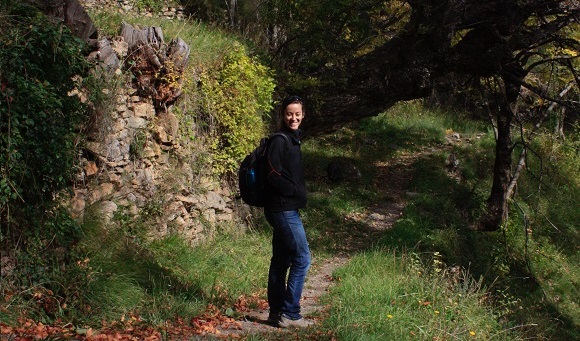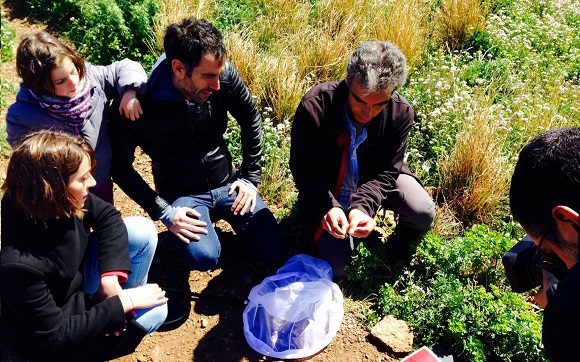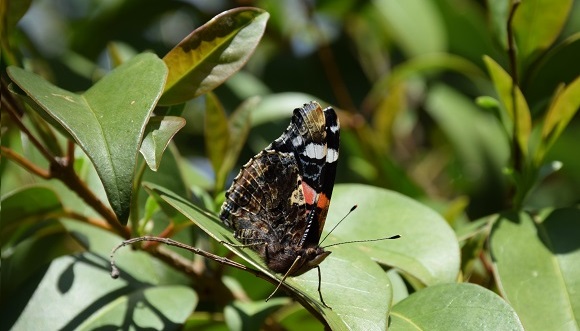“With the urban population set to grow by 56% by 2050, we need to make cities greener to protect biodiversity”
We interviewed Yolanda Melero, holder of a PhD in biology, whose studies have revolved around the behaviour and dynamics of American mink populations. At CREAF she is continuing to investigate how animal populations function, but is now focusing on butterflies to learn about biodiversity-friendly city design.

Let's go back to the beginning. How did you start out on your career in science?
My first step was writing a thesis, at the Universitat de Barcelona on the ecology and behaviour of the American mink, which is an introduced, invasive species in Europe, Asia and South America, and is considered one of the most problematic vertebrate species for biodiversity worldwide. I finished my thesis in 2007. In 2011, after a four-year break from research, I was sure I wanted to continue my scientific career. I got a Beatriu de Pinòs grant, followed by a European Marie Sklodowska-Curie grant, to go to the University of Aberdeen in Scotland, where I centred my studies on the dynamics of metapopulations, i.e. fragmented populations, in natural ecosystems. I was still studying the American mink, but with the aim of analysing the factors in changes in its population and applying that knowledge for control purposes.
And what brought you to CREAF from Scotland?
To be honest, I wanted to change the direction of my scientific career. I was tired of applying my studies to improve species control measures, and urban ecology had always appealed to me. So, I applied for another Beatriu de Pinòs grant to come to CREAF to work with Joan Pino, who was carrying out research in that area, and here I am! Now I'm applying my knowledge about metapopulations to cities, to discover how populations of fauna and flora function in urban environments.
To that end, we're currently studying butterflies. They're a good bioindicator and can be used as a model for comparing how different general characteristics of animal species function in - and outside - cities: different types of dispersal, generalist versus more specialist diets, etc.

Butterflies in cities?
Yes! We don't always realize it, but they're there! Only the most generalist and mobile species are capable of living in the majority of cities though. That means we need to change our city model to accommodate butterflies with lower dispersal and mobility levels too. Actually, our target has to be more of everything: more abundance, more diversity in terms of native species, and more areas where butterflies and other species of conservation interest can live.
What have you learned so far about how cities should be to achieve that?
"We need a larger percentage of green land in cities, and to connect it to form a network of gardens to help butterflies travel further afield"
Predictably, the factor that most affects connection between populations is construction. Greater building density and height make it more difficult for species to disperse and move from one garden to another. So, we need a larger percentage of green land in cities, and to connect it to form a network of gardens to help butterflies travel further afield. What we have to study now is how that connection and garden composition ought to be to ensure viable populations and avoid "ecological traps", i.e. habitats in which individuals settle but end up dying with no population growth.
We also know that biodiversity needs chaos, that vegetation must be diverse for insect diversity to increase. That sometimes clashes with aesthetic interests though.
Making cities more butterfly-friendly won't be easy then...
No, not easy, but not impossible either. It's a question of time. In the past we didn't know how populations functioned in natural or agricultural habitats, which hindered their management and conservation, but a lot of progress has been made since then. The same thing is happening with urban ecology, which is quite a new field, because it was overlooked until recently. Now though, due to urban growth and its impact, understanding cities is absolutely necessary for conservation in general. Understanding just natural habitats isn't enough. So, as we study the urban system and its effect on biodiversity, our management of such issues will improve.

Which cities are you studying?
Mainly Barcelona, but we will be able to extrapolate our findings to any other large city. In Barcelona, a first step could be improving the connections between the parks near Collserola and Montjuïc, because those areas are the "sources" of the city's butterflies and doing so would be a starting point for gradually linking up the other parks, which are currently unconnected. The Besòs corridor is another area where we're now starting to see biodiversity in terms of butterflies and other species.
Things will be much clearer once we've launched the uBMS citizen science project, which will involve a network of volunteers establishing an inventory of butterflies in Barcelona and Madrid. That will make it possible for us determine which butterflies frequent the cities' parks and gardens, the variety of species present, their abundance, and other associated factors.
Fascinating! Has there always been so much interest in making cities greener?
"Until recently, cities were the major ecosystem ecologists had overlooked"
No. You could say that, until recently, cities were the major ecosystem ecologists had overlooked. Luckily, there are more and more resources for such research, thanks to both political changes and a change of mentality in the science arena. The European Commission is very keen on making cities greener too.
What you're doing is clearly a very important step then.
Exactly. We have to study cities much more, given that the urban population is expected to grow by 56% by 2050. Now is the time to make them greener, more sustainable and more biodiverse.






